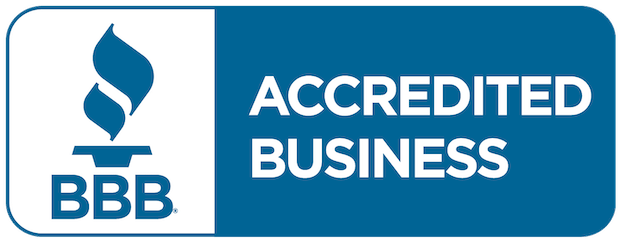Managing diabetes in pets, especially dogs, can feel overwhelming, but recent advances in technology are making it much easier for pet parents to monitor and manage their dog’s condition. One such breakthrough is the use of continuous glucose monitoring (CGM) systems, like the FreeStyle Libre (FSL), which allow for real-time tracking of your dog’s blood sugar levels without the need for daily sticks or invasive procedures. Let’s explore how this system works and why it can be a game-changer for diabetic pets.
Is the FreeStyle Libre a Human or Animal Device?
You might be familiar with continuous glucose monitors (CGMs) for people, especially if you know someone who has diabetes. The FreeStyle Libre is actually a system designed for humans but has been adapted for use in pets, such as dogs and cats.
The FreeStyle Libre works similarly for humans and dogs, but due to physiological differences between the species, glucose levels are monitored and interpreted differently.
.jpg)
How It Works for Both Humans and Dogs
The FreeStyle Libre system measures glucose levels in humans and dogs using a small sensor placed under the skin. This sensor doesn’t measure glucose directly in the blood but rather in the interstitial fluid—the fluid between the cells in the body. The sensor then sends real-time glucose readings to a reader or smartphone app, providing continuous monitoring without the need for frequent blood draws.
Do Dogs and Humans Have the Same Blood Glucose Levels?
While dogs and humans both produce glucose and rely on insulin to regulate it, their normal glucose levels can differ. Normal blood glucose levels in dogs are typically between 80-120 mg/dL, whereas in humans, normal fasting blood glucose levels are slightly lower, around 70-100 mg/dL. Dogs also metabolize glucose at different rates than humans, meaning that glucose levels may fluctuate more or less dramatically depending on various factors like diet, exercise, and overall health.
Is the Glucose in Dogs the Same as in Humans?
Glucose itself is chemically the same in both species, but its regulation and metabolism can differ. This is why the FreeStyle Libre readings must be interpreted carefully for dogs, especially since blood glucose readings in dogs might not perfectly align with human standards.
Benefits of the FreeStyle Libre for Dogs
One of the biggest benefits of the FreeStyle Libre system is that it offers a non-invasive way to keep track of your dog’s glucose levels. This is great news for both you and your pet! Traditional blood glucose monitoring involves frequent blood samples, which can be uncomfortable for dogs and stressful for pet parents.
The FSL system can also help prevent hypoglycemia (low blood sugar), a common risk for diabetic dogs. Because the sensor continuously monitors glucose levels, you’ll be able to see if your dog’s levels drop and take action before it becomes dangerous. Over time, this can improve your dog’s overall health and quality of life by providing better blood sugar control.
.jpg)
How to Use the FreeStyle Libre with Your Dog
Your veterinarian will write a prescription for the FreeStyle Libre sensor and reader, which can be purchased from a veterinary distributor or even a human pharmacy. Once you have the device, you’ll bring your dog and the sensor back to your vet, where they will shave a small area (usually on the shoulder or back) and safely place the sensor. The vet will make sure the sensor is properly implanted and working accurately before sending you home to start monitoring your pet’s glucose levels.
The FreeStyle Libre sensor for dogs is about the size of a quarter and is a round, adhesive disc that has a thin filament on the underside that measures glucose levels just beneath the skin. When your veterinarian places the sensor, they’ll insert it just under your dog’s skin with a small catheter in a quick and minimally painful procedure—much less painful than a traditional needle stick. Once applied, the sensor can stay on for up to 14 days and is water-resistant, so it’s durable for everyday activities. During this time, you can easily monitor your dog’s glucose levels by scanning the sensor with the reader or a smartphone app.
The small procedure consists of your veterinarian:
- Shaving a small area: Your veterinarian will trim a section of hair, about 2 to 3 square inches, where the sensor will be placed.
- Cleaning the skin: Before attaching the sensor, the area is cleaned with alcohol to remove any dirt or oils.
- Appling adhesive: For extra security, a medical adhesive in a doughnut shape can be applied to help the sensor stay in place.
- Attaching the sensor: The sensor is applied using a special applicator. With firm but moderate pressure, it’s pressed into place until you hear a click, signaling it’s securely attached.
Accuracy and Safety of the FreeStyle Libre for Pets
While the FreeStyle Libre system is generally accurate, it’s important to know that some discrepancies can occur, particularly when glucose levels are very low. This is why it’s important to work closely with your veterinarian to guarantee the data is being interpreted correctly and that any necessary adjustments to your pet’s treatment plan are made.
The FSL system is considered safe for most dogs, though some studies have reported mild skin reactions in a small number of cases. If you notice any irritation or discomfort around the sensor site, be sure to contact your veterinarian for advice.
Making Life Easier for Diabetic Dogs and Their Owners
Managing diabetes doesn’t have to be overwhelming, and with tools like the FreeStyle Libre, you can take control of your pet’s health in a way that’s less invasive, more comfortable, and ultimately more effective. With continuous glucose monitoring, you’ll have peace of mind knowing that your dog’s glucose levels are being tracked in real-time, helping to prevent complications and improve their quality of life.
If you think the FreeStyle Libre might be a good fit for your dog, talk to your veterinarian about how to get started!
If you have questions and you'd like to reach out to us, you can call us directly at (402) 824-2529, or you can email us at [email protected]. Don't forget to follow us on social media Facebook, Instagram.


